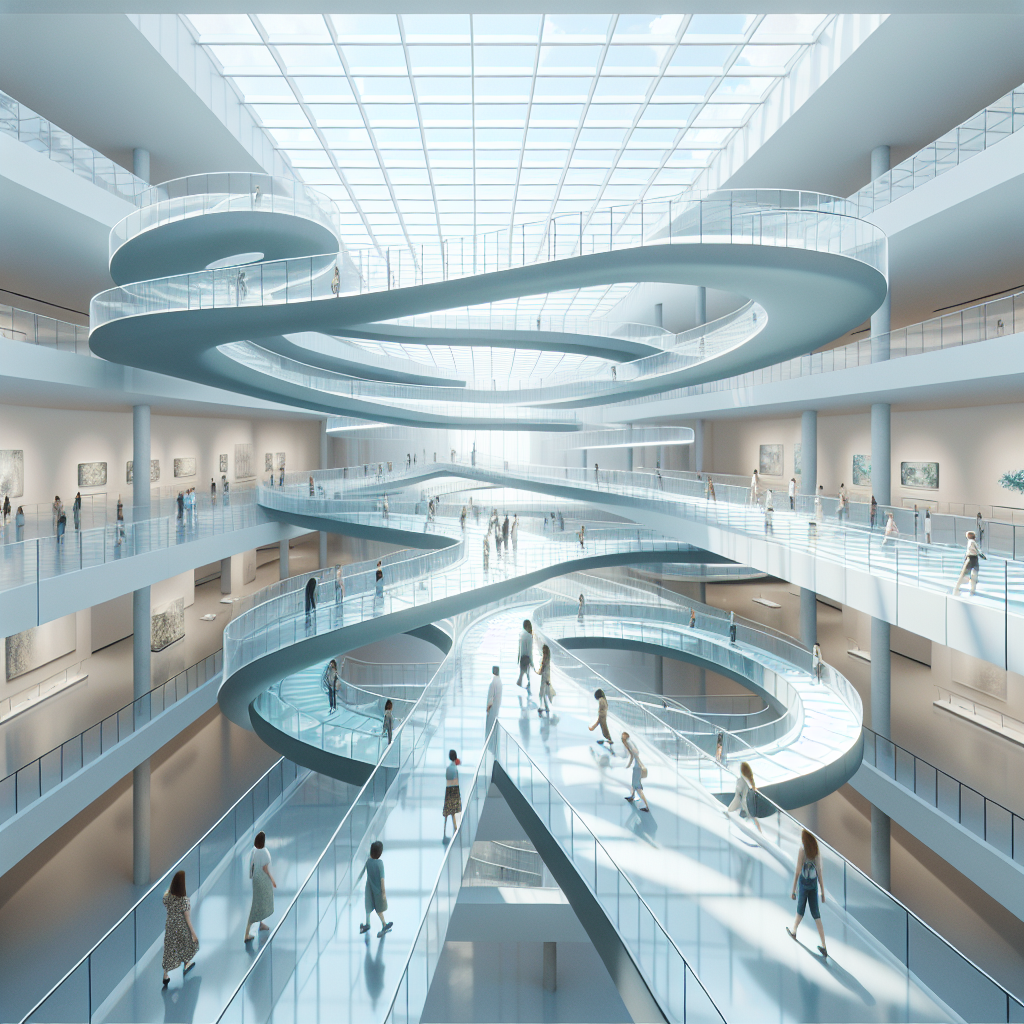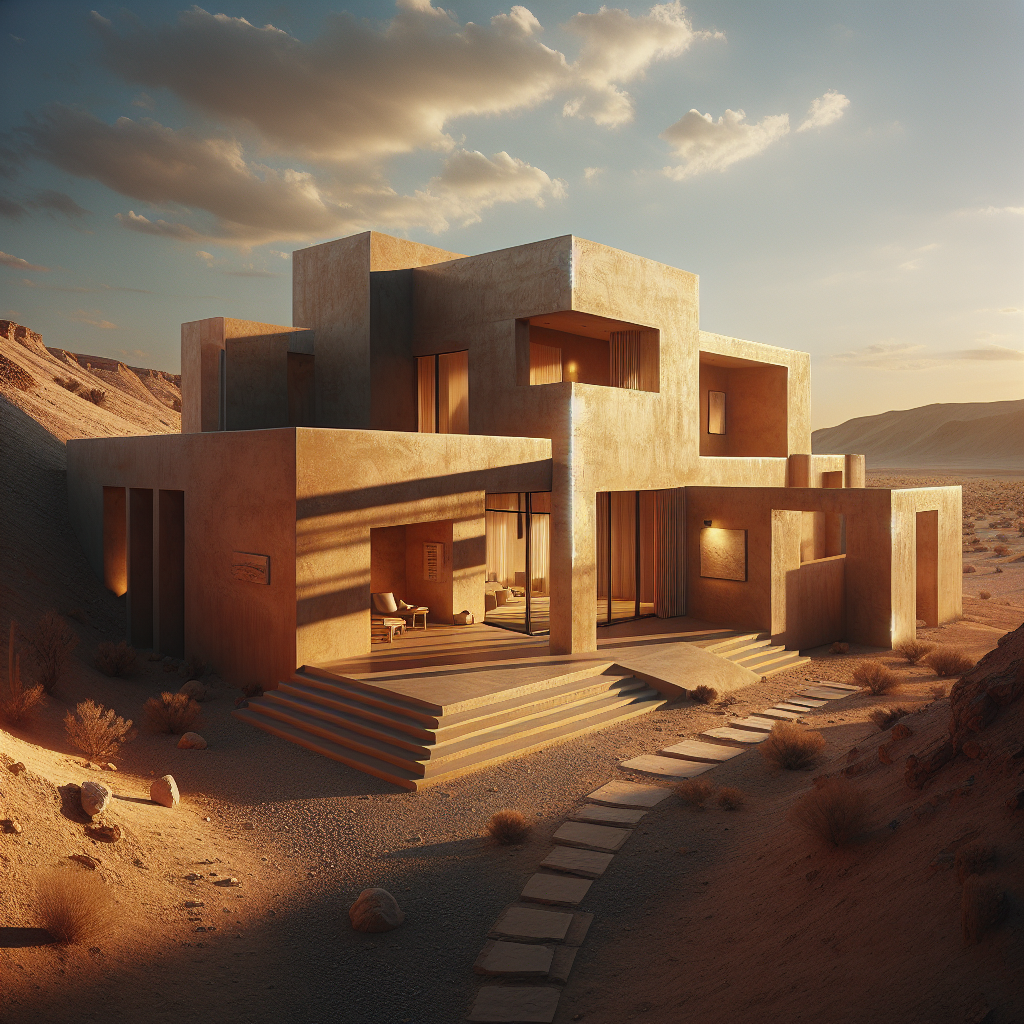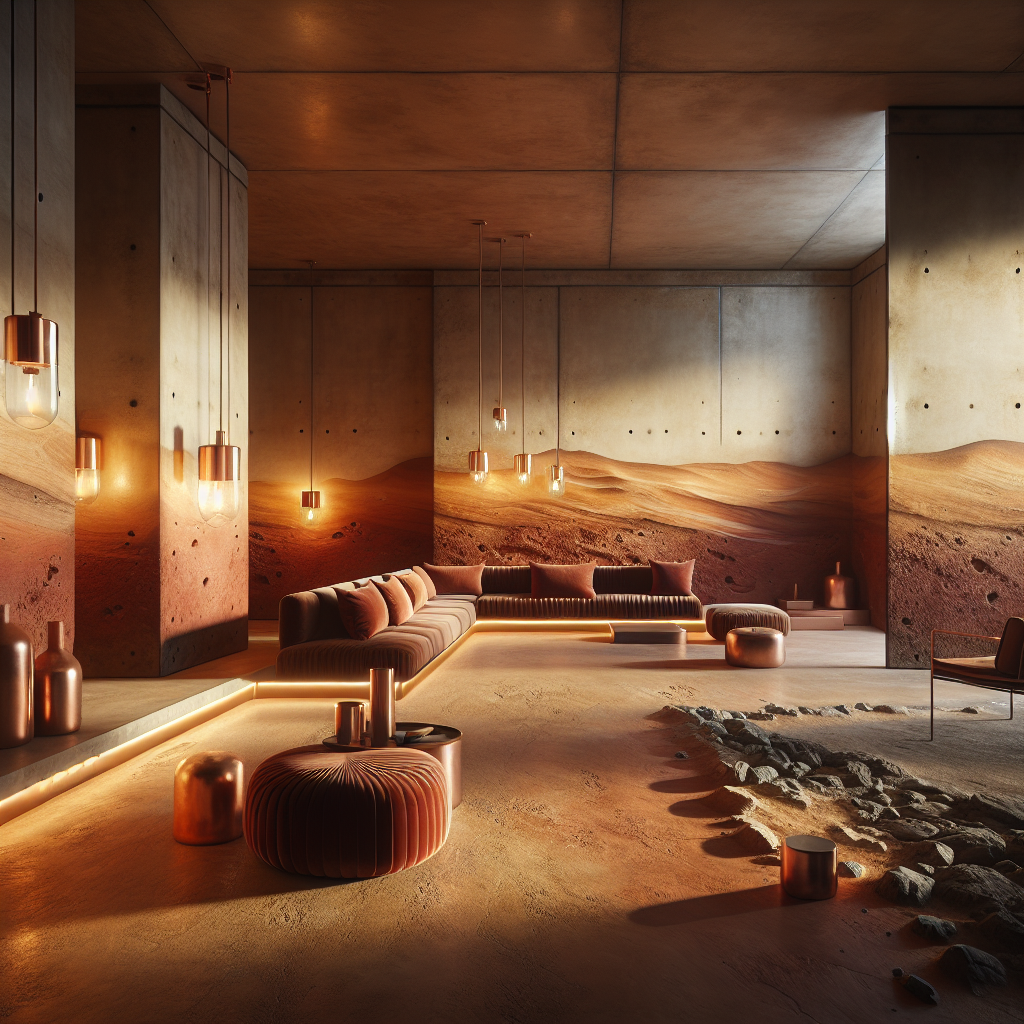Floating labyrinth walkways: in museums bridging multiple exhibits with winding paths

Floating Labyrinth Walkways: Reimagining Museum Circulation Through Suspended Pathways
In the evolving world of museum architecture, the traditional notion of linear circulation is dissolving. A new spatial language is emerging—one that invites visitors to wander, pause, and rediscover art from above. Floating labyrinth walkways—sinuous, elevated paths that meander through galleries—are redefining how we experience exhibitions. These suspended routes, often composed of glass, steel, or tensile composites, bridge multiple exhibits with an almost dreamlike fluidity, transforming the act of movement into an act of contemplation.
The Rise of the Aerial Museum Experience
The concept of the floating walkway is not entirely new; its roots can be traced to early 20th-century explorations of spatial layering and transparency, particularly within the Bauhaus movement. Yet, its current resurgence in museums reflects a deeper cultural shift. In an era where digital immersion dominates, architects are seeking to re-engage the body in physical exploration. The labyrinthine walkway, suspended mid-air, becomes a metaphor for curiosity—inviting visitors to lose themselves in space, not just in thought.
Recent projects, such as the extension of the Fondation Beyeler in Basel and the Grand Egyptian Museum in Giza, have experimented with multi-level circulation systems that blend transparency, suspension, and organic curvature. These designs create a dialogue between the visitor and the exhibit, offering shifting perspectives that evolve with every step. The result is a choreography of movement—part architectural promenade, part emotional journey.
Designing the Floating Labyrinth
Architecturally, the challenge lies in balancing lightness and stability. Floating labyrinth walkways often rely on advanced structural systems—carbon-fiber trusses, post-tensioned cables, or laminated glass panels—to achieve the illusion of weightlessness. The design vocabulary borrows from both tensegrity structures and biomimetic principles, echoing natural forms such as vines or river deltas.
In museums like the Louisiana Museum of Modern Art in Denmark, the integration of elevated walkways allows visitors to traverse between pavilions without interrupting the visual flow of the landscape. The labyrinthine quality is achieved not through disorientation, but through a carefully orchestrated rhythm of openness and enclosure. Each curve, each turn, is designed to frame a new perspective—whether it’s a sculpture below, a garden beyond, or a reflection in the glass.
This architectural approach resonates with the principles of biophilic design, which emphasizes the human need for connection with nature. By elevating circulation paths and allowing natural light to filter through translucent floors, designers create a sense of floating amidst air and light—an experience that transcends the static boundaries of the gallery.
Spatial Psychology and the Art of Meandering
Museums have long grappled with the question of how to guide visitors through vast collections without overwhelming them. The floating labyrinth walkway offers a poetic solution. It encourages non-linear exploration, where visitors can choose their own routes, retrace steps, or pause mid-air to observe from new vantage points. This freedom aligns with contemporary curatorial philosophies that favor interpretive autonomy over didactic sequencing.
According to a 2024 study by the International Council of Museums, visitor engagement increases by up to 35% in environments that allow for “spatial wandering.” The labyrinth, once a symbol of confusion, is reinterpreted as a spatial narrative—an architectural story that unfolds through movement. The elevated path becomes a literal and metaphorical bridge between art and observer.
Architects such as Sou Fujimoto and SANAA have embraced this ethos in their museum designs, crafting fluid, interconnected spaces that blur the boundaries between circulation and exhibition. Their work echoes the sensibilities explored in modern exhibit design, where architecture itself becomes part of the storytelling process.
Material Innovation and Structural Transparency
The success of floating labyrinth walkways depends heavily on material innovation. Advances in lightweight composites and transparent structural systems have made it possible to suspend entire corridors with minimal visual obstruction. Laminated glass floors, for instance, can now support significant loads while maintaining optical clarity, creating the sensation of walking on air.
In the National Museum of Qatar, designed by Jean Nouvel, elevated pathways weave through the interlocking “desert rose” forms, offering visitors glimpses of the exhibits below through glass apertures. The interplay of light, shadow, and reflection transforms the walkway into a kinetic experience—one that changes with the time of day and the density of visitors.
Similarly, the Musée Atelier Audemars Piguet in Switzerland employs curved glass corridors that spiral through the landscape, merging architecture and exhibition into a continuous, flowing form. The transparency of these structures not only enhances spatial awareness but also reinforces the museum’s identity as a living, breathing organism.
Bridging Exhibits, Bridging Eras
Beyond their aesthetic allure, floating labyrinth walkways serve a functional purpose: they connect disparate exhibits and historical narratives. In large institutions such as the Victoria and Albert Museum or the Metropolitan Museum of Art, the challenge of navigating between wings or time periods often disrupts the visitor’s sense of continuity. Suspended pathways can elegantly bridge these gaps, offering seamless transitions between epochs, materials, and curatorial themes.
This connective quality aligns with the growing trend of adaptive reuse in museum architecture. As institutions expand into former industrial or civic buildings, elevated walkways provide a means of unifying fragmented spaces without compromising historical integrity. They hover delicately above the old, creating a dialogue between preservation and innovation.
Immersive Technologies and the Future of Museum Circulation
The integration of immersive technologies is amplifying the sensory potential of floating labyrinth walkways. Interactive lighting, responsive soundscapes, and augmented reality overlays are transforming these pathways into experiential canvases. Visitors might walk through a suspended bridge that reacts to their footsteps with subtle tonal shifts or projected imagery—a concept reminiscent of the interactive installations explored in digital art environments.
Museums are increasingly adopting these hybrid approaches to attract younger audiences accustomed to multisensory engagement. The labyrinth, in this context, becomes a stage for digital storytelling—an architectural interface between the physical and the virtual. As technologies like augmented reality mature, the floating walkway could evolve into a platform for dynamic, data-driven exhibitions that adapt in real time to visitor behavior.
Sustainability and Structural Efficiency
Sustainability remains central to the evolution of museum design. Floating labyrinth walkways, when designed intelligently, can contribute to energy efficiency by optimizing circulation and daylight penetration. Lightweight materials reduce structural loads, while open configurations promote natural ventilation. These principles echo the broader movement toward biodegradable and sustainable architecture, where form and function coexist in ecological harmony.
Architectural firms are experimenting with modular systems that allow walkways to be reconfigured or relocated as exhibitions change. This adaptability not only reduces waste but also ensures that the museum remains a living organism—responsive to curatorial evolution and visitor flow.
The Poetics of Suspension
Ultimately, the allure of the floating labyrinth walkway lies in its poetic tension—the balance between gravity and grace, structure and illusion. It invites visitors to inhabit a liminal space, suspended between art and architecture, between observation and participation. The experience is both physical and metaphysical: a reminder that movement through space can be as profound as the art it reveals.
As museums continue to redefine their role in the 21st century—not merely as repositories of culture but as dynamic environments for reflection and connection—the floating labyrinth walkway stands as a symbol of this transformation. It bridges not only exhibits but also disciplines, eras, and emotions, embodying the very essence of contemporary design: fluid, inclusive, and endlessly exploratory.
In a world increasingly obsessed with speed and linearity, these suspended paths invite us to slow down, to wander, and to rediscover the beauty of getting lost.




